In early summer as bees, butterflies, and hummingbirds search for nectar and pollen, they find incredible bounty in Monarda – a group that includes some of our most beautiful and valuable native perennials. Watching wildlife enjoy Monarda on a summer day is only part of the pleasure – Monarda has other gifts for humans as well.
The Monarda genus is “endemic” to North America, meaning it is native only to this continent. There are over 20 species of Monarda, and 3 of them, all known variously as “Bee Balm,” “Wild Bergamot,” and “Oswego Tea,” make great garden plants in the Eastern US. All three are colorful, sun-loving, easy to grow, and deer resistant. The pom-pom flower heads are actually clusters of individual tubular flowers loaded with sweet nectar that attracts hummingbirds and a huge variety of pollinators. Flower colors range from pale lavender to pink to flame red.

Monarda fistulosa (most frequently called “Wild Bergamot”) stands 4 to 5 feet tall and blooms with showy lavender flowers from July through September. It is tolerant of poor soil and can handle periods of drought. A true meadow plant, this Monarda is native to most of Southern Canada and almost all of the US east of the Rocky Mountains.
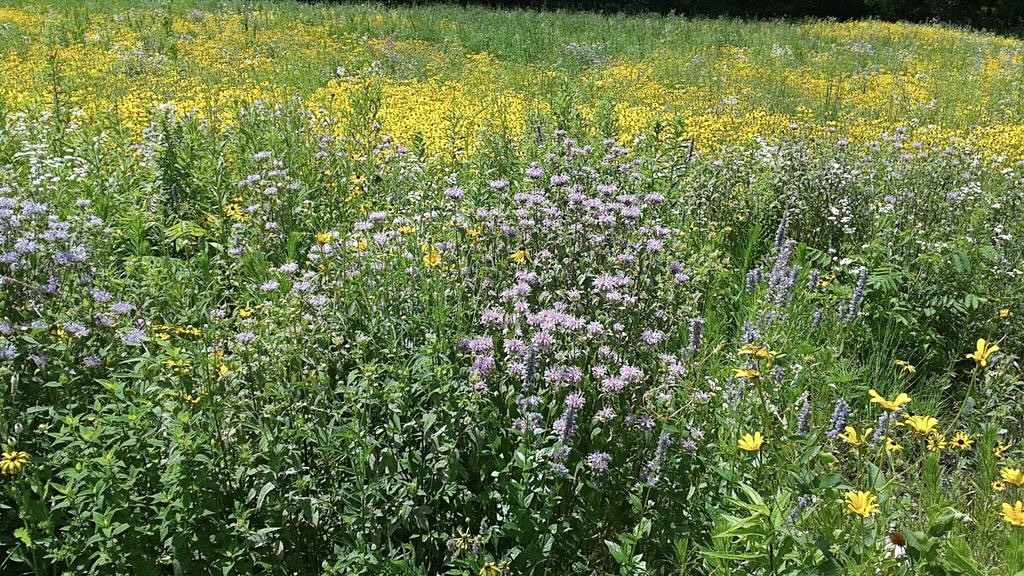
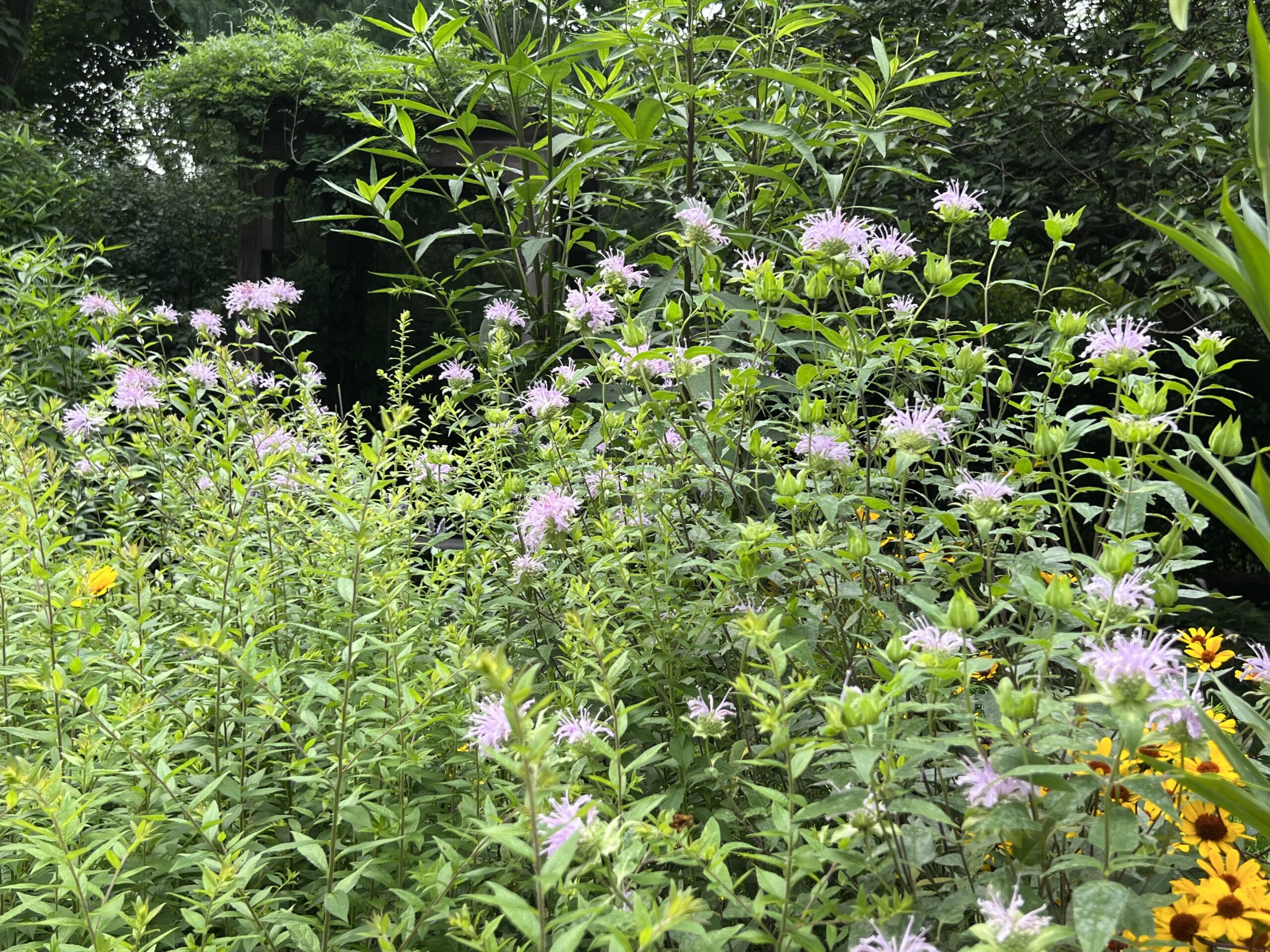
Monarda didyma (most often called “Bee Balm”) is typically bright red, though there are natural variations and cultivars in different shades of rose and pink. It is shorter than Monarda fistulosa, usually topping out at 3 to 4 feet. It prefers more moisture and is a more aggressive spreader. Monardas are in the mint family and spread by rhizomes as well as seed. While M. fistulosa is less aggressive, Monarda didyma can take over a small flower bed sending runners in every direction, so plant it where it has room to roam. It will form a stunning colony in the right place, with full sun and fairly rich soil. Hummingbirds find it irresistible.
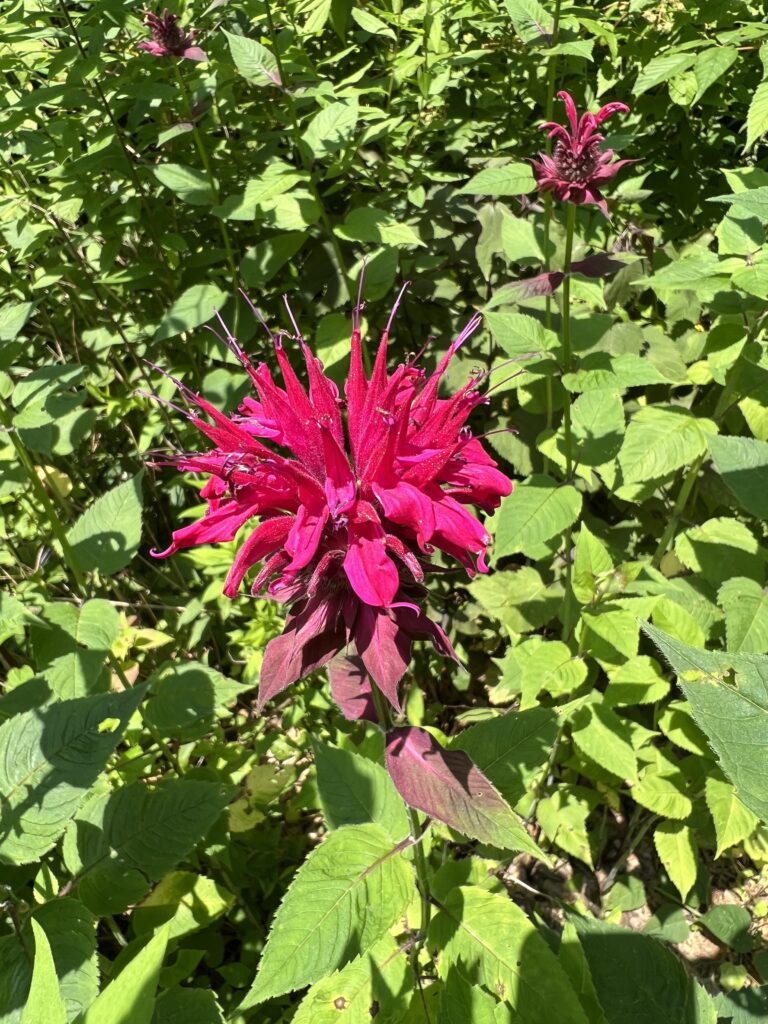
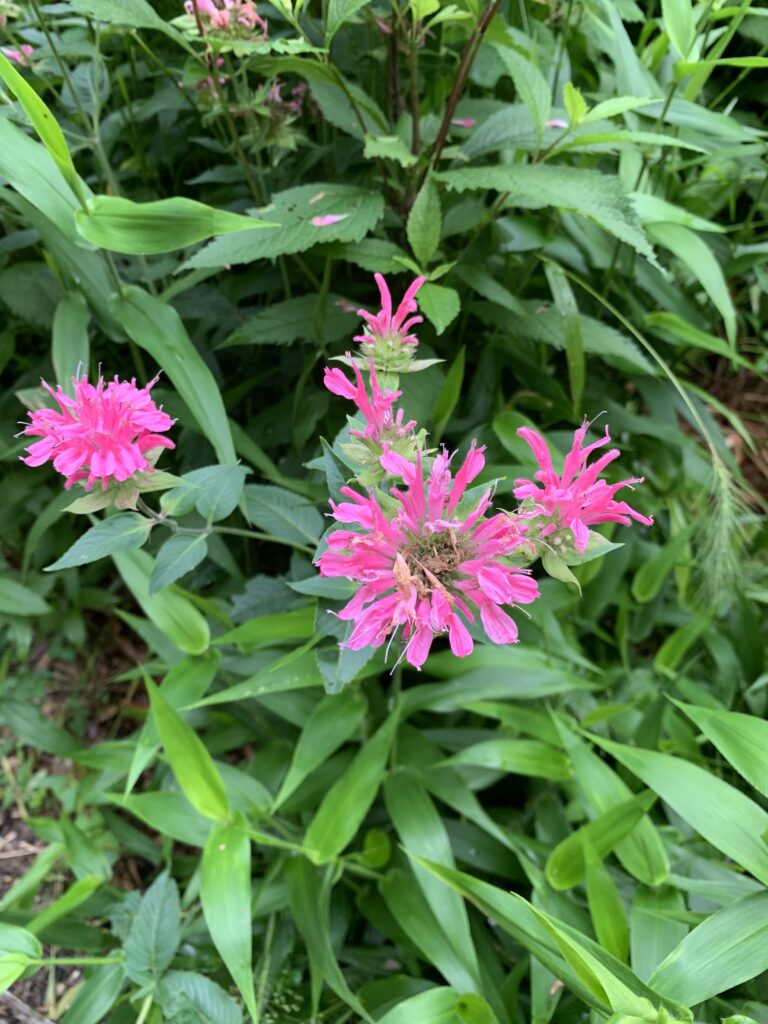
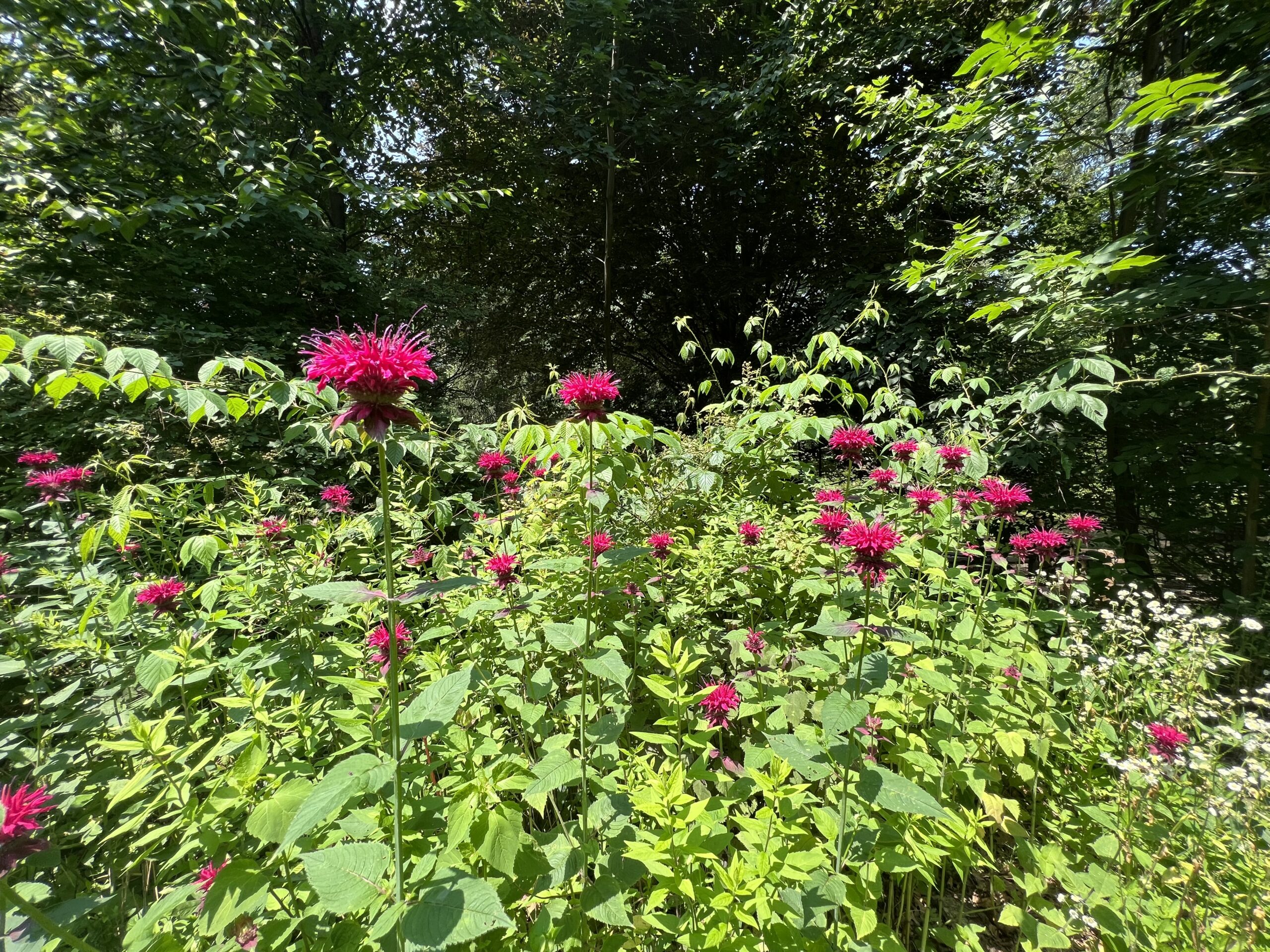
Monarda bradburiana is native to the warmer climates of Southeastern and Southcentral US, but is hardy in Zones 5 to 8, so it does very well as far north as Connecticut, New Jersey, and parts of New York. It is a great garden plant because it is a clump-former, not spreading aggressively by rhizomes, and grows only 1 to 2 feet tall. It blooms in June, earlier than other Monardas, and has interesting shaggy flowers in pale pink.
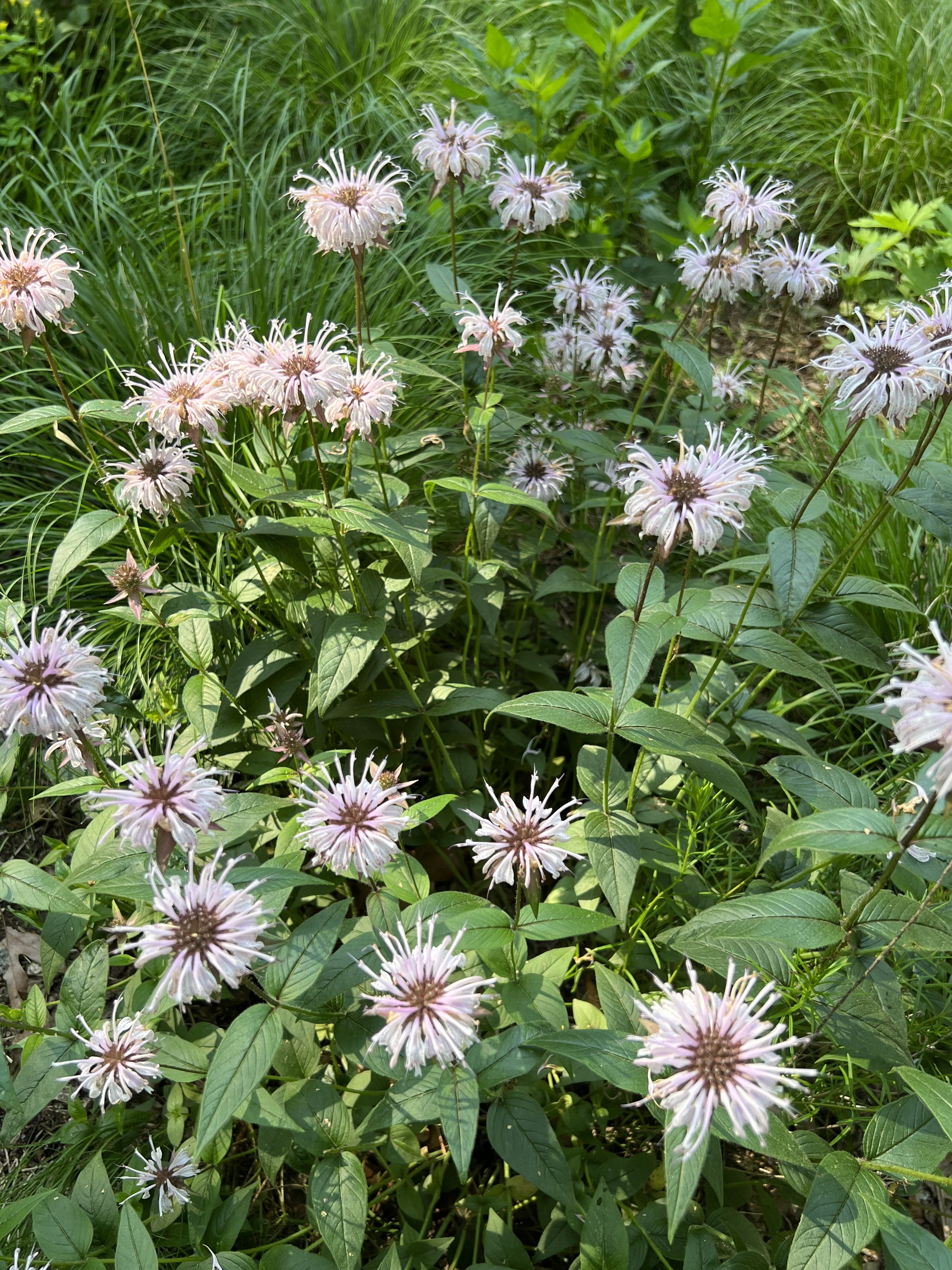
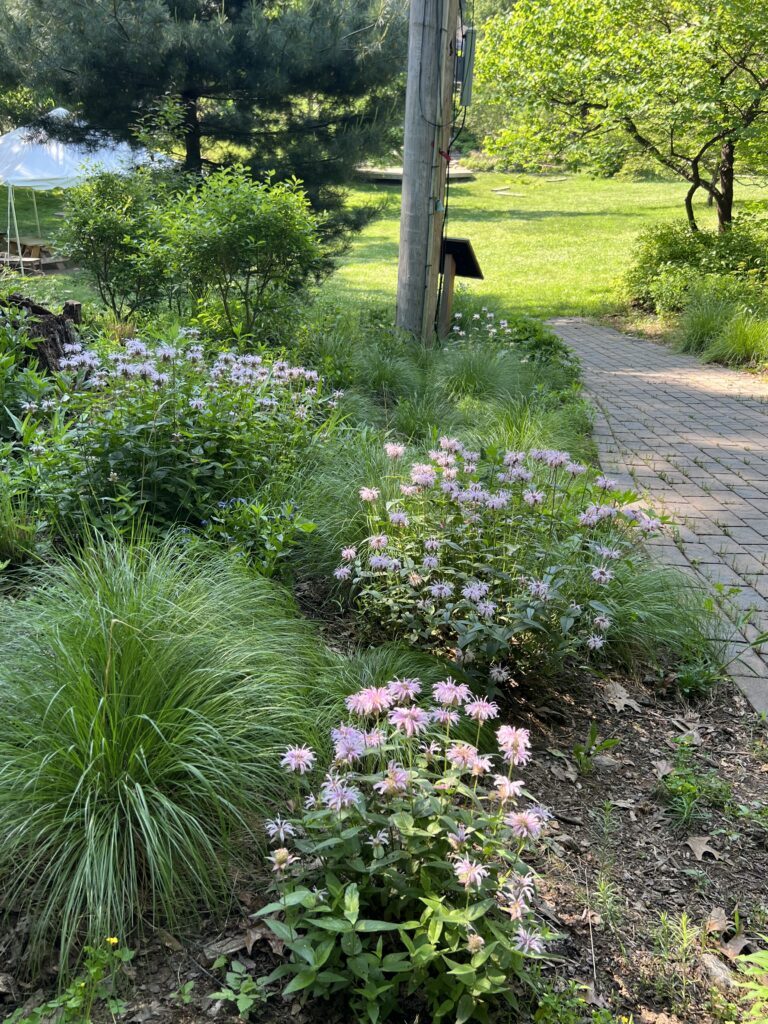
The common names for these Monarda species seem to overlap. All of them are called “Bee Balm” by many gardeners. And while the name “Wild Bergamot” most often refers to M. fistulosa, it is frequently applied to M. didyma as well. And both M. fistulosa and M. didyma are commonly called “Oswego Tea.” Though botanists would wag a finger and say this is exactly why common names are confusing, all three of these names actually are appropriate for all three plants.
“Bee Balm” refers to an ancient medicinal use of Monarda. Indigenous Americans taught European settlers that applying shredded (or chewed!) Monarda leaves to insect bites or stings neutralizes the pain and speeds healing.
“Wild Bergamot” refers to the flavor of “Oswego Tea.” Indigenous people of the Oswego River area in upstate New York introduced settlers to a delicious tea made from Monarda leaves and flowers. The flavor reminded Europeans of the taste of Bergamot orange, the flavoring in Earl Grey tea. It is often said that after the Boston Tea Party, colonists turned to Oswego Tea and boycotted the English product. That isn’t really a sacrifice: try adding steaming water to a handful of torn Monarda leaves and let it steep for 10 minutes. It’s delicious! Add a little honey and it’s even better.
As an herbal seasoning, both the leaves and flowers of Monarda are very good. Dried leaves of M. fistulosa, which are spicy as well as minty, can be used to season roasted meats. The fresh flowers of M. didyma (pulled individually out of the cluster), have a sweet and citrusy flavor that goes well with fruit, and in salads. Though Monarda plants are vulnerable to powdery mildew if conditions are too damp, it is easy to avoid the affected leaves and select newer growth along the stem and near the flowers.
Monarda is known to have anti-microbial and antiseptic qualities. The tea helps with sore throats, mouth sores, and gastric symptoms. Poultices and salves made with Monarda are said to prevent infection and aid in healing skin wounds. Early American colonists also learned to plant Monarda around their beehives. Not only does the honey pick up flavor from the flowers, the anti-microbial effect of Monarda helps prevent diseases in the bee colony.
So, try a cup of Oswego Tea, hot or iced, and watch the hummingbirds, butterflies, and bumblebees share the gifts of Monarda. It is a balm for all of us.

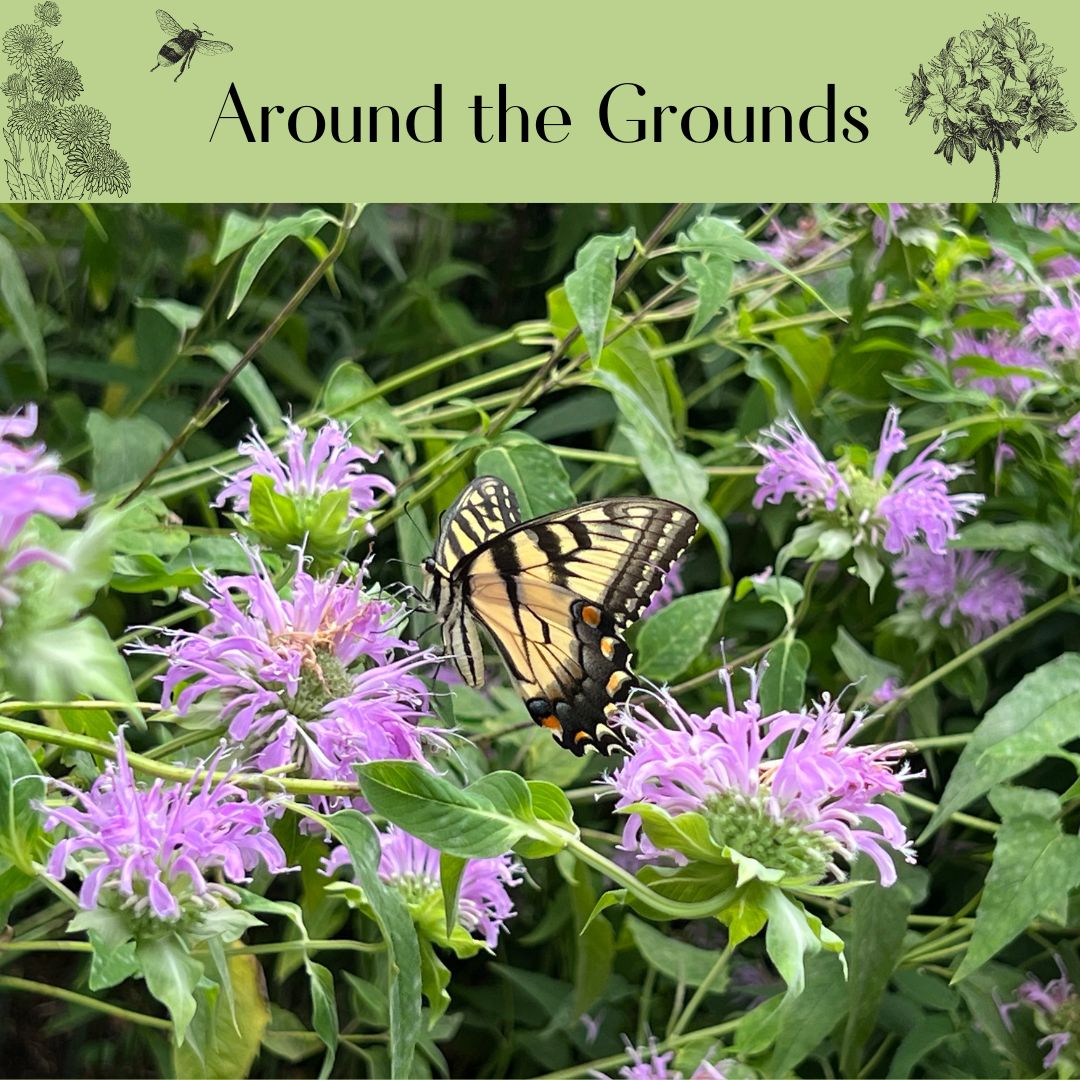
Very informative and entertaining. I first planted some Monarda in our garden a few years ago and it has spread quite a bit. It’s beautiful and so easy to grow! I’m going to try that cup of tea. Thanks!
Such pretty colors in all of these flowers. The pictures you included are stunning. I enjoyed the video as well, a nice touch!
Cathy, I am going to have some monarda tea tomorrow, as a result of this (as always) informative posting!
I planted M. didyma years ago to attract hummingbirds – which it did! I seeded some M. fistulosa this past winter and can’t wait for them to bloom next year, I hope!
Enjoy!
Lynne
I made the tea with Monarda fistulosa and it was really good! I haven’t tried it with M. didyma, but I did eat one of the flowers pulled from the flower cluster, and it was sweet! The leaves of M fistulosa just eaten fresh are very spicy. I can’t speak to the health benefits, but it is interesting and fun to try some of our edible garden plants!